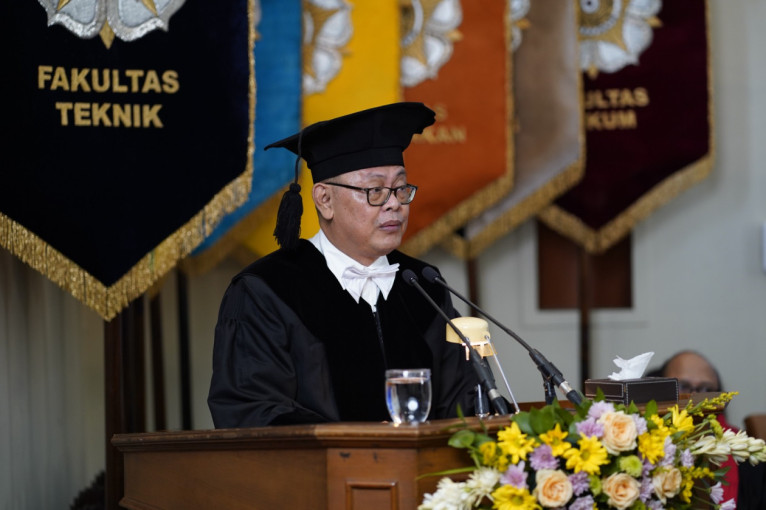
Indonesia has experienced an excess electricity supply since 2015, and it is predicted to continue. This situation arises due to the mismatch between demand projections and actual realization.
While reliability or guaranteed energy availability is something to be grateful for, this surplus supply has burdened the country’s finances from an economic standpoint.
“The abundance of electrical energy supply also impacts investments in new renewable energy because this condition automatically limits its development space,” said Professor Imam Prasetyo of the UGM Faculty of Engineering during his inaugural speech as a professor in chemical engineering on Tuesday (Jan. 9) at the UGM Senate Hall.
“In a situation of energy abundance, the government is likely to take a pragmatic approach by prioritizing existing energy sources.”
In his address titled “Nanoporous Carbon Material and the Future of Energy Storage Device Development,” Professor Prasetyo mentioned that the condition of an abundance of electricity supply in Indonesia can be avoided if the planning of power plant construction involves an integrated energy storage system.
Thus, government incentives for purchasing electric vehicles and the free distribution of household electronic appliances, such as electric stoves and rice cookers, as short-term solutions to mitigate excess electricity supply may not be necessary.
The availability of efficient and reliable energy storage utility units will be integral to future energy generation systems.
Various developments in new technologies related to energy storage systems and the need to integrate renewable energy sources into the power generation system pose challenges and opportunities for the energy sector’s development.
Therefore, research, technology development, and innovation are required to anticipate future trends and expand the scope of the application of energy storage technology.
The professor stated that he and the research team at the Carbon Research Group of the Department of Chemical Engineering at UGM are currently researching materials for developing energy storage devices using nanoporous carbon materials.
Nanoporous carbon materials are porous carbon materials with pore sizes smaller than 100 nanometers, featuring hierarchical pore structures, interconnected pore networks, and large specific surface areas.
In applications, these carbon particles can take the form of fine powder, granules, pellets, or be molded into blocks.
Although still in the research stage, Professor Prasetyo believes that research on energy storage utility units in power generation is essential for managing the abundance of electricity supply.
The function of this energy storage system unit can be optimized by hybridizing energy storage devices with electrolysis devices. The surplus electrical energy stored in the energy storage device can be utilized for water electrolysis, resulting in hydrogen gas ready for conversion into energy.
“With the development of energy storage technology, the main constraint, which is the intermittency in the use of solar and wind energy, can be overcome so that the utilization of these non-polluting renewable energy sources will become more widespread,” he said.
However, equally important, the development of an energy storage system is expected to accelerate the expansion of electrification access while also enabling an increase in the coverage of renewable energy utilization. This, in turn, can reduce dependence on fossil energy and the ecological impact caused by fossil energy.
Author: Gusti Grehenson
Photographer: Firsto

